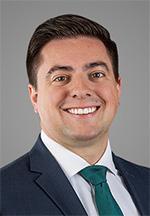

Education Matters

2025
Amy Brandt
Partner | San Francisco
Jordan Carman
Associate | San Francisco
Christopher Fallon Partner | Los Angeles
Stephanie J. Lowe
Senior Counsel | San Diego
Reece Martin
Summer Associate | San Diego
Madison Tanner
Associate | San Diego


FEHA
Court Orders UC To Reconsider Ban On Hiring Undocumented Students, Finds Fear Of Federal Enforcement Does Not Justify FEHA Discrimination.
In May 2023, the University of California formed a working group to consider whether it could employ undocumented students who lacked federal work authorization. At the time, UC employed undocumented students who had Deferred Action for Childhood Arrivals (DACA) status, but refused to hire those without work authorization.
In January 2024, the UC voted to dissolve the working group without changing its policy. The minutes from that meeting reflected UC’s concern that employing undocumented students might trigger federal enforcement action under the Immigration Reform and Control Act of 1986 (IRCA). The IRCA prohibits employers from knowingly hiring individuals who are not lawfully admitted for permanent residence in the U.S. or authorized for employment under federal law. Although no court had directly ruled on whether IRCA applied to state government entities, UC cited significant enforcement risk.
Subsequently, the California Legislature passed a bill that would have prohibited public universities from denying employment to students based on a lack of federal work authorization, unless required by federal law. It would also have required public institutions to treat IRCA as inapplicable to the state. In September 2024, Governor Newsom vetoed the bill, citing potential civil and criminal liability for state employees.
In October 2024, petitioners Jeffry Umaña Muñoz and Iliana Perez filed a petition for writ of mandate, seeking an order compelling the Regents to abandon the policy. They alleged that the policy constituted an abuse of discretion and violated the Fair Employment and Housing Act (FEHA). Under FEHA and its implementing regulations, an employer may not discriminate based on immigration status unless it
proves by clear and convincing evidence that federal law requires it. Muñoz and Perez argued that the policy facially discriminated against undocumented students based on immigration status. The trial court summarily denied the petition.
Muñoz and Perez filed a petition for review with the California Supreme Court, seeking to overturn the trial court’s denial. In response, UC noted uncertainty about whether IRCA applied to state employers and stated that a judicial ruling could benefit all parties. The California Supreme Court granted review and transferred the case to the court of appeal with instructions to issue an order to show cause.
The court of appeal asked UC to explain the legal basis for its policy and whether it believed federal law required the policy. UC did not argue that federal law required the policy. Instead, it contended that the policy was a discretionary measure based on litigation risk and did not constitute discrimination. UC emphasized that it hired undocumented students with federal work authorization, such as DACA recipients, and asserted that its policy was aimed at avoiding potential liability, not excluding individuals based on immigration status.
Muñoz and Perez argued that the policy discriminated against a subset of undocumented students based on a lack of work authorization, which they argued was a proxy for immigration status. They contended that litigation risk could not justify a policy that facially violated FEHA, and that UC had offered no evidence that federal law required the exclusion.
The court of appeal agreed. It found that UC’s policy facially discriminated based on immigration status and that FEHA required UC to show that such discrimination was mandated by federal law. Because UC had expressly declined to take a position on IRCA’s applicability and had not attempted to meet that standard, the court of appeal concluded that it had abused its discretion. The court of appeal rejected UC’s arguments under the bona fide occupational qualification defense and held that litigation risk alone was not a sufficient justification for a facially discriminatory policy.
The court declined to decide whether the policy violated FEHA on its face. It explained that it did not need to reach that question because Muñoz and Perez had not fully developed the argument in their initial filings. Nonetheless, the court of appeal held that UC could not justify a facially discriminatory policy based solely on litigation risk.
The court of appeal granted a writ of mandate, ordering UC to reconsider its employment policy under the proper legal standards. The court of appeal made clear that it did not require UC to adopt a particular policy, only that it could not continue relying on litigation risk alone to justify one that discriminates on its face.
Muñoz v. The Regents of the University of California (Aug. 5, 2025, No. A171410) ___Cal.App.5th___.

new to the Firm!

John Louis Chiappe is an Associate in our Sacramento office, where he provides labor, education and employment law expertise to our clients.

Hoaithi “Y.T.” Nguyen is Senior Counsel in Liebert Cassidy Whitmore’s San Francisco Office. Y.T. has over 15 years of experience in employment litigation, labor relations and investigations.

Selena Farnesi, an Associate in Liebert Cassidy Whitmore’s Fresno office, brings extensive litigation and policy experience to LCW’s public sector practice, with a focus on education, employment, and administrative law.
FOURTEENTH AMENDMENT
Ninth Circuit Upholds School District’s Vaccine Mandate.
In August 2021, the Los Angeles Unified School District (District) adopted a COVID-19 vaccination policy requiring all employees to be fully vaccinated by October 15, 2021. The policy allowed for medical and religious exemptions but permitted the District to exclude exempt employees from the workplace if health risks could not be sufficiently reduced. The stated purpose of the policy was to provide the safest possible environment for learning and work. The District terminated at least two employees who refused vaccination.
In November 2021, Health Freedom Defense Fund and individual District employees filed suit against the District under 42 U.S.C. section 1983, a federal statute that allows individuals to sue state and local officials for violating their constitutional rights. Plaintiffs alleged that the District’s policy violated their Fourteenth Amendment rights to substantive due process and equal protection. They claimed the COVID-19 vaccines did not prevent infection or transmission and therefore amounted to involuntary medical treatment rather than vaccination. They also argued that the policy arbitrarily classified employees based on vaccination status. They asked the court for injunctive relief and any other relief the court deemed proper.
In September 2022, the federal district court granted the District’s motion for judgment on the pleadings. The district court relied on Jacobson v. Massachusetts (1905), where the U.S. Supreme Court upheld a smallpox vaccine mandate against a constitutional challenge. In Jacobson, the Court held that when the government imposes a vaccine requirement to protect public health, courts must defer to policymakers unless the law is arbitrary or irrational. Based on that precedent, the district court applied rational basis review, the most deferential form of constitutional scrutiny, which requires only that a policy be reasonably related to a legitimate government interest. The district court
concluded that the District’s policy met that standard because the District could have reasonably believed the vaccine would protect employee and student health. It dismissed both the due process and equal protection claims.
Plaintiffs appealed to the Ninth Circuit Court of Appeals. After oral argument before a three-judge panel, the District rescinded its vaccine policy. The Ninth Circuit panel vacated the district court’s judgment, holding that Jacobson applied only to vaccines that prevent disease transmission, and remanded the case for further proceedings. The District then petitioned for rehearing en banc.
The Ninth Circuit granted rehearing en banc, vacated the panel’s opinion, and ultimately affirmed the district court’s judgment. Writing for the majority, Judge Bennett held that the case was not moot even though the District had rescinded its vaccine policy. The Ninth Circuit explained that since some plaintiffs remained terminated, and the complaint broadly requested any appropriate relief, the plaintiffs were still effectively seeking reinstatement to their former jobs. Since the district court could still order reinstatement, it could grant effective relief so the case was not moot.
On the merits, the Ninth Circuit reaffirmed Jacobson as binding precedent. It held that when the government enacts a vaccine mandate to protect public health and safety, Jacobson requires courts to apply rational basis review. The constitutionality of such a mandate does not depend on whether the vaccine provides immunity or prevents transmission, but whether policymakers could have reasonably concluded that it would protect public health. The Ninth Circuit held that even if the vaccines merely lessened symptoms, the District could reasonably have concluded that a vaccine mandate would protect the health of employees and students. The Ninth Circuit held that the vaccine policy satisfied rational basis review and rejected both the equal protection and substantive due process claims.
Judge Owens dissented, arguing the case was moot because the District had fully rescinded its policy and there was no realistic chance it would be revived. Judge Lee, joined by Judge Collins, dissented in part. He argued that Jacobson should apply only if a vaccine prevents disease transmission and that plaintiffs should have been allowed to present evidence rebutting the government’s assumptions.
The Ninth Circuit affirmed the district court’s judgment in favor of LAUSD.
Health Freedom Def. Fund, Inc. v. Carvalho (9th Cir. July 31, 2025, No. 22-55908) 2025 U.S. App. LEXIS 19182.
LABOR
PERB Allows Union To Pursue Unit Modification Petition For Non-Student-Serving Healthcare Employees Only.
In 1982, the Public Employment Relations Board (PERB) established two bargaining units for non-physician patient care employees at the University of California (UC): the NX Unit for registered nurses and the HX Unit for other professional patient care workers. In 1997, the University Professional and Technical Employees (UPTE), Local 9119, became the exclusive representative of the HX Unit. That unit includes Behavioral Health Counselors, Dietitians, Clinical Social Workers, and similar roles. While many of these employees work in UC medical centers providing patient care, others are campus-based and serve student populations.
On October 24, 2024, UPTE filed four unit modification petitions to add eight student-facing classifications to the HX Unit. These included Health Educators II and III, Student Disability Specialists, Student Life & Development Specialists, and Advocates. UPTE argued that Health Educators serve both patients and students; some work in hospitals providing patient education, while others work on campuses delivering public health education to students. Because UPTE believed the proposed additions would increase the HX Unit by less than 10%, it did not submit proof of majority support.
On November 8, 2024, the United Auto Workers (UAW) filed a petition for recognition of a newly proposed bargaining unit called the Student Services and Advising Professionals (SSAP) unit. UAW’s proposed unit included all eight classifications that UPTE sought to add, along
with 11 additional student services titles. UAW submitted proof of majority support from more than 50% of employees in the proposed unit.
On November 25, 2024, PERB’s Office of the General Counsel (OGC) notified the parties that because both unions sought to represent overlapping positions, PERB Regulation 32781(e)(2) required UPTE to submit proof of at least 30% support. UPTE disputed that interpretation and asked PERB to consolidate its petitions with UAW’s petition for recognition. OGC issued an order to show cause as to why it should not dismiss UPTE’s petitions. UPTE opposed the order to show cause and moved to intervene as a full party in UAW’s recognition proceedings. On December 17, 2024, OGC dismissed UPTE’s petitions for failure to provide the required proof of support.
UC subsequently declined to recognize UAW’s SSAP unit, citing the pending representational dispute. On December 26, 2024, UAW filed a formal petition asking PERB to investigate and certify the unit as appropriate for exclusive representation.
On January 6, 2025, UPTE appealed the dismissal of its petitions. In its response, UAW argued that the employees at issue were not healthcare workers and did not serve patients but instead provided student services and support. On April 9, 2025, PERB issued its decision in Regents of the University of California (PERB Order No. Ad-527-H). It held that even though UPTE had filed first, once UAW submitted a recognition petition for overlapping units, UPTE became subject to the 30% support requirement. Because UPTE had not submitted that proof of support, OGC acted properly in dismissing its petitions. However, PERB emphasized that the
dismissal was without prejudice. If any of the disputed classifications remained unrepresented after PERB completed its processing of UAW’s recognition petition, UPTE could refile its petitions.
On April 10, 2025, UPTE filed a new unit modification petition, this time seeking to add Health Educator I–IV classifications to the HX Unit. Unlike in its earlier petitions, UPTE included proof of support from more than 30% of the affected employees. UPTE again asserted that some Health Educators worked in patient care settings at UC medical centers, while others served students on campus.
On April 11, OGC issued a second order to show cause, questioning the validity of UPTE’s renewed petition in light of UAW’s still-pending petition for recognition of the SSAP unit. On April 18, UC informed OGC that it had voluntarily recognized UAW as the exclusive representative of the SSAP unit, which included the Health Educator titles. However, UC acknowledged that PERB retained the authority to determine the final scope of that unit.
On May 7, 2025, OGC issued an administrative decision dismissing UPTE’s renewed petition. UPTE appealed. PERB held that UPTE could pursue its petition only for classifications not already included in the unit that
UC had recognized as part of UAW’s petition. PERB found that UAW had consistently represented, both in its filings and arguments, that the SSAP unit excluded healthcare employees and included only student-serving workers. According to UAW, the Health Educators in the SSAP unit did not provide patient care and did not work in healthcare environments.
Accepting UAW’s representations, PERB concluded that Health Educators who serve students were already part of the SSAP unit and therefore UAW represented them. However, Health Educators who provide patient care remained outside that unit. Accordingly, PERB held that UPTE’s renewed petition could proceed, but only as to those Health Educators who work in clinical or patientserving roles. UPTE would need to amend its petition to exclude student-serving Health Educators to move forward.
In its final order, PERB affirmed in part and reversed in part OGC’s May 7, 2025 dismissal. PERB remanded the case to OGC for further proceedings, limited to the patient-serving Health Educators UPTE still sought to represent.
Regents of the University of California (2025) PERB Dec. No. A530H.




First Amendment
Ninth Circuit Holds That Continuing Medical Education Requirements Are Government Speech And Not Subject To First Amendment Challenges.
Dr. Azadeh Khatibi is a California-licensed ophthalmologist who teaches continuing medical education (CME) courses. Do No Harm is a nonprofit organization made up of healthcare professionals and policymakers, including at least one member who teaches CME in California. Under California law, physicians and surgeons must complete at least 50 hours of CME every two years, and only courses that meet the standards set by the Medical Board of California are eligible for credit.
In 2019, the Legislature enacted Assembly Bill 241, which required that all credit-eligible CME courses include instruction on implicit bias, unless the course qualifies for a narrow exemption, such as being solely dedicated to research or issues that do not include a patient care component. The law defines implicit bias as unconscious attitudes or stereotypes and states that it contributes to disparities in healthcare.
Khatibi taught CME courses that complied with all state requirements except the implicit bias mandate. She opposed including such content, arguing it was irrelevant or counterproductive. In 2023, Khatibi and Do No Harm filed suit in federal district court against officials of the Medical Board of California, in their official capacities. Khatibi and Do No Harm claimed that California’s implicit bias requirement violated their First Amendment rights by compelling them to include specific content in CME courses to receive state accreditation.
The district court dismissed the case. It held that CME courses approved for credit by the Medical Board of California constitute government speech and are therefore not subject to First Amendment scrutiny. The district court explained that when the government speaks for itself, it is entitled to convey its own message without being required to include or permit opposing views. Plaintiffs appealed.
The Ninth Circuit affirmed the district court’s decision. The Ninth Circuit applied the U.S. Supreme Court’s framework from Shurtleff v. City of Boston, which asks whether the government (1) has a history of controlling the expression at issue, (2) is likely to be perceived as the speaker, and (3) maintains
substantial control over the content. The Ninth Circuit held that all three factors weighed in favor of the Medical Board officials.
First, the Ninth Circuit found that California has a longstanding tradition of regulating the medical profession, including through mandated CME content. It traced this authority back to the 19th century and noted that the Legislature has regularly required instruction on specific topics such as pain management, geriatric care, and cultural competence.
Second, the Ninth Circuit acknowledged that instructors like Khatibi interact directly with CME attendees. However, the court concluded that physicians are likely to understand that the content of accredited CME reflects state-imposed requirements.
Third, the Ninth Circuit concluded that the Medical Board exercises pervasive control over CME content. The Board requires that implicit bias training be included, imposes instructor qualifications, mandates recordkeeping and evaluation procedures, and retains the authority to audit courses or deny credit. Given this level of control, the Ninth Circuit found that California “controls accredited CMEs from beginning to end.”
Because all three Shurtleff factors supported the conclusion that the CME requirement constituted government speech, the Ninth Circuit held that the First Amendment did not apply. The Ninth Circuit explained that while plaintiffs remain free to teach or advocate their own views, they may not compel the State to grant continuing education credit for content that does not meet its own standards.
The Ninth Circuit affirmed the district court’s judgment.
Khatibi v. Hawkins (9th Cir. July 25, 2025, No. 24-3108) 2025 U.S. App. LEXIS 18544.
Note:
Although this case does not directly involve a public school or college, the Ninth Circuit’s holding reinforces the broad scope of the government speech doctrine in regulated educational settings. California public education agencies that develop or approve instructional content for state credit, licensure, or certification, may rely on this decision to defend viewpoint-based content requirements against First Amendment challenges.
CALPERS
CalPERS Issues Circular Letter
Reminding Public Agencies To Comply With Retired Annuitant Restrictions And Requirements Or Face Steep Penalties.
On June 4, 2025, the California Public Employees’ Retirement System (CalPERS) issued Circular Letter No. 200-021-25 (Circular Letter) reminding Public Agencies to ensure compliance with the Public Employees’ Retirement Law (PERL) and the Public Employees’ Pension Reform Act of 2013 (PEPRA) when employing retired annuitants or face steep penalties. The Circular Letter mostly conforms to existing requirements, but many of those requirements are misunderstood and technical. The Circular Letter follows increased auditing and scrutiny of retired annuitant appointments.
The Circular Letter reiterates that most school districts and community college districts are not considered “contracting agencies” and cannot rely on under Government Code section 21221 subdivision (h), which allows agencies to hire retirees into vacant positions while actively recruiting for a permanent employee. It also clarifies the requirements for contracting agencies to legally appoint retired annuitants to positions vacated by leaves of absence or while recruiting for permanent hires. Agencies must strictly follow appointment procedures, including open-meeting resolutions, or risk significant CalPERS penalties.
You can find more information about the Circular in our Special Bulletin

DISCRIMINATION
Trump Administration Settles Antisemitism And Other Discrimination Complaints With Columbia University, Brown University, And UCLA.
Over the last few weeks, the Trump Administration entered into several agreements with higher education institutions, including Columbia University, Brown University, and UCLA, to settle allegations of antisemitism and discrimination on campus. We summarize the agreements below, and you can read a more detailed description in LCW’s Special Bulletin
In March 2025, the Trump Administration froze more than $400 million in Columbia University’s federal funding, citing allegations that Columbia failed to respond to antisemitism on campus. In May, the U.S. Departments of Education (DOE) and U.S. Department of Health and Human Services (HHS) found that Columbia had violated Title VI by acting with deliberate indifference to student-on-student harassment of Jewish students.
Columbia agreed to pay the federal government $200 million and an additional $21 million to settle an EEOC investigation into workplace harassment based on religion. Columbia agreed to make changes to address antisemitism; uphold merit-based admissions and hiring not based on protected categories; and update disciplinary policies, including prohibiting demonstrations and protests inside academic buildings and limiting the use of masks or face coverings during protests.
Brown University reached a voluntary agreement to restore federal funding and resolve three pending federal agency reviews. Brown agreed to adopt federally defined gender classifications in policies, programs, and facilities usage; not provide gender reassignment surgery or prescribe puberty blockers or hormones for transgender minors; address antisemitism and advance Judaic Studies; and maintain merit-based admissions. Brown also committed $50 million over ten years to workforce development organizations in Rhode Island.
UCLA settled a private lawsuit brought by Jewish students and a Jewish professor, which the Administration later joined, by agreeing to pay $6 million. UCLA promised to ensure Jewish students, faculty, and staff have full and equal access to programs, activities, and facilities, and to develop policies preventing protestors from blocking such access. The Administration then froze $339 million in UCLA’s federal research grants and issued a Notice of Violation of Title VI and the 14th Amendment, by finding that UCLA had acted with deliberate indifference in creating a hostile educational environment for Jewish and Israeli students. This suggests that the federal government may seek to broaden the scope of UCLA’s concessions beyond the terms of the current settlement.
U.S. Supreme Court Rules Retirees Cannot Use The ADA To Secure PostEmployment Benefits.
The U.S. Supreme Court affirmed the decision of the Court of Appeals for the Eleventh Circuit, which held that retired employees are not “qualified individuals” under Title I of the Americans with Disabilities Act (ADA), and therefore are not entitled to sue their former employer for post-employment benefits. Ninth Circuit precedent was already aligned with this U.S. Supreme Court decision.
The plaintiff was Karyn Stanley, a firefighter who was diagnosed with Parkinson’s disease. In 2018, Stanley retired after her disease left her incapable of performing essential job duties. After retiring, Stanley learned that in 2003, the City changed its policy to only provide retirement benefits to disabled retirees for 24 months following their retirement. Stanley sued in 2020.
The ADA prohibits employers from adopting and implementing policies or practices that discriminate against “qualified individuals” based on the individual’s disability. Title I of the ADA defines a “qualified individual” to mean someone with a disability who, with or without reasonable accommodation, can perform the essential functions of the job that they hold or desire.
The Eleventh Circuit Court of Appeals held that Stanley could not sue in 2020 because, at that point, she was retired from the City and therefore not a “qualified individual” under the ADA.
The U.S. Supreme Court affirmed, holding that Stanley was not a “qualified individual” under the ADA when she filed suit because she was neither a qualified applicant for employment nor a current employee at the time of the alleged discrimination.
Stanley v. City of Sanford, 145 S.Ct. 2058 (2025).
HARASSMENT
Employee
Wins Harassment Claim Based On Her Second-Hand Knowledge That A Widely Shared Nude Photo Was Falsely Said To Be Her.
Lilian Carranza, then a captain in the Los Angeles Police Department (LAPD or Department), learned that a photo of a topless woman, which was falsely said to be her, was circulating among LAPD personnel. One of her subordinates told her: 1) he had seen on-duty officers looking at the photo on a cellphone and making lewd comments about Carranza; and 2) he had heard officers were talking about the photo everywhere he went. Carranza asked the Department to notify personnel that the photo was not of her and to order them to stop sharing it.
The Department investigated. The investigation found that an unknown Department employee, while on or offduty, circulated a photograph of a nude woman throughout the Department and indicated it was Carranza. The investigation identified 10 to 13 people who saw the photo and four separate incidents of people viewing or hearing about the photo. Carranza received a letter from the LAPD that said appropriate penalties would be imposed, but did not disclose further details, citing confidentiality reasons. Carranza later learned that no officers were disciplined.
The Department did not notify personnel that the photo was not of Carranza, nor order that employees stop sharing it.
Carranza sued the City of Los Angeles, asserting a single cause of action for hostile work environment due to sexual harassment under the Fair Employment and Housing Act (FEHA). A jury found in Carranza’s favor and determined that the LAPD failed to take immediate and appropriate corrective action despite that it knew of the conduct. It awarded Carranza $4 million in non-economic damages.
The City appealed. The City claimed that there was insubstantial evidence that the harassment was sufficiently severe or pervasive to alter the conditions of Carranza’s employment and create an abusive work environment.
The California Court of Appeal rejected the City’s claim. The Court determined that substantial evidence supported the jury’s determination that Carranza endured severe or pervasive harassment that altered the conditions of her workplace, based on Carranza’s secondhand knowledge that the photo was widely circulating. Carranza understood that the photo circulated for some length of time and involved “dozens if not hundreds” of officers, both identified and unknown, throughout the LAPD.
Plus, despite Carranza’s repeated requests, the Department did not order LAPD officers to stop sharing the photo, advise them that it was not Carranza in the photo, or discipline anyone who distributed the photo. The fact that LAPD allowed the distribution to continue unchecked supported not only Carranza’s claims that LAPD’s response to the harassment was not sufficient, but also demonstrated the pervasiveness and severity of the harassment itself and the impact on Carranza’s work environment.
Carranza v. City of Los Angeles, 111 Cal.App.5th 388 (2025).
Note:
The Court of Appeal held that even secondhand knowledge of severe or pervasive harassment can support a hostile work environment claim if the conduct is widespread and the employer fails to act. Educational agencies must take prompt and effective action to stop harassment, regardless of whether the targeted employee personally witnesses the misconduct.
RETALIATION
Elected Officials Are Not Whistleblowers Under Labor Code Section 1102.5.
Wanda Brown, the former elected City Treasurer for the City of Inglewood (City), informed the City Council of her concerns about financial improprieties involving City funds. The City Council then voted to reduce Brown’s job duties and her salary. Brown sued the City and individual council members, alleging that the City violated Labor Code section 1102.5, which protects employees from retaliation for reporting unlawful conduct.
The trial court denied the City defendants’ joint motion to strike the complaint. They appealed that decision to the California Court of Appeal, which held that Brown could not seek relief for retaliation under Labor Code section 1102.5 because Brown was an elected official, and not an employee of the City.
The California Supreme Court affirmed. The Court noted that the legislative history of Labor Code section 1106, which defines “employee” as an individual employed by a public agency for purposes of Labor Code section 1102.5, suggests a “particular purpose of protecting rank-and-file employees from supervisors and managers.”
As a result, elected officials are not “employees” for the purposes of Labor Code section 1102.5 and cannot seek relief under that law for allegedly retaliatory conduct taken by the agency for which the elected official serves.
Brown v. City of Inglewood, 2025 Cal. LEXIS 3956.
Note:
The California Supreme Court ruled that elected officials are not “employees” under Labor Code section 1102.5 and therefore cannot bring whistleblower retaliation claims under that statute. While most school district and community college district staff are employees covered by section 1102.5, the decision confirms that elected governing board members and/or trustees do not have these statutory protections.
Legal Updates
Weekly Executive Order Roundups.
Since taking office, President Trump has issued a series of executive orders, several of which have direct implications for public agencies, including institutions of public education. In light of the volume and rapid issuance of executive orders, beginning in early February, LCW launched a weekly roundup of new executive orders that may impact public agency clients, including those in public education.
Our Week 25 Executive Order Roundup describes the following Executive Order, which are likely to be of particular interest to educational institutions:
•
Executive Order: Saving College Sports
On July 24, 2025, President Trump issued an Executive Order that seeks to empower federal agencies, including the Department of Education, to enforce new provisions on athletic scholarships and “pay-for-play” licensing deals for student athletes.
In response to recent legal decisions and the evolving landscape of student-athlete compensation, the Order expresses the administration’s intent to rein in name, image, and likeness (NIL) deals for student athletes. The Order directs college athletic departments with over $125 million in revenue to expand scholarship and roster opportunities in non-revenue sports and women’s athletics, and to curb third-party pay-for-play arrangements.
Within 30 days, the Department of Education must develop a plan, in consultation with other federal agencies, to enforce the policies in the Order through all appropriate regulatory, enforcement, and litigation mechanisms, including federal funding decisions and enforcement of Title IX. Further, the Department of Labor and the National Labor Relations Board must develop measures to clarify the status of student athletes (i.e., employees or not).
California public and private colleges, especially those with large athletic budgets, may be impacted by the guidance that federal agencies promulgate pursuant to the Order. Institutions of higher education should review their NIL practices for consistency with the policies articulated in the Order.
Our Week 26 Executive Order Roundup describes the following education-related update:
• DOJ
Issues Guidance on Nondiscrimination Requirements In Relation to DEI Programs
On July 29, 2025, the U.S. Department of Justice issued guidance clarifying that federal antidiscrimination laws apply to all federally funded programs and initiatives, including those commonly categorized as Diversity, Equity, and Inclusion (DEI) efforts. The guidance interprets and applies statutes such as Titles VI and VII of the Civil Rights Act of 1964, Title IX of the Education Amendments of 1972, and related federal nondiscrimination laws.
Although the guidance is formally directed at recipients of federal financial assistance, its implications may extend to California employers that are subject to federal nondiscrimination laws. The guidance provides important insight into how the DOJ interprets and intends to enforce existing nondiscrimination laws as they relate to DEI-related policies, practices, and programs.
DEI Programs Must Align with Federal Antidiscrimination Laws
The DOJ underscores that DEI programs – even if well-intentioned – must not result in preferences or exclusions based on protected characteristics, such as race, sex, or national origin.
Caution Against Use of “Facially Neutral” Proxies
The guidance warns that criteria that function as proxies for protected characteristics, such as individuals’ “lived experiences,” “cultural competence,” or neighborhoods, may be unlawful if used as proxies for protected characteristics in decision-making. For example, requiring diversity statements may be problematic if intended to elicit or assess protected characteristics for decision-making purposes.
Illustrative Examples of Potentially Unlawful Practices
The DOJ provides examples of DEI-related practices that may violate federal law if implemented improperly:
■ Scholarships or fellowships limited to individuals of a particular race or sex
■ Preferences in admissions, hiring, or promotion for “underrepresented groups”
■ Race- or sex-segregated “safe spaces”
■ DEI trainings that stereotype or exclude based on protected traits
■ Mandates requiring “diverse slates” of applicants or interviewers
Responsibility for Third-Party Vendor Compliance
The guidance advises that recipients of federal funding should actively monitor third-party vendors and contractors for compliance with nondiscrimination laws. While it recommends terminating relationships with vendors that engage in discriminatory practices, the DOJ has not definitively stated whether recipients will be held legally liable for such third-party conduct.
Our Week 27 Executive Order Roundup describes multiple education-related updates, including the following:
• EXECUTIVE ORDER: Improving Oversight of Federal Grantmaking (August 7, 2025)
President Trump signed an Executive Order that tightens executive control of the federal grant funding process by requiring a senior appointee at each federal agency to sign off on each grant the agency makes. A senior appointee is a non-career employee of the executive branch, often appointed by the President.
The Order directs each agency head to designate a senior appointee who will be responsible for creating a process to ensure any discretionary grants awarded are consistent with the President’s policy priorities and the national interest. Among other provisions, the Order prohibits agencies from approving grants that will fund, promote, encourage, subsidize, or facilitate:
■ “Racial preferences or other forms of racial discrimination by the grant recipient;”
■ “Denial by the grant recipient of the sex binary in humans or the notion that sex is a chosen or mutable characteristic;”
■ Illegal immigration; or
■ Any “other initiatives that compromise public safety or promote anti-American values.”
The Order also requires agencies, to the extent permitted by law, to take steps to revise the terms and conditions of existing grants and include in future discretionary terms: (1) allowing federal agencies to terminate grants for any reason and at any time; and (2) prevent grantees from immediately drawing down general grant funds for specific projects without the affirmative authorization of the agency.
Collectively, these provisions and others in the Order will impact the availability of federal funding, increase scrutiny of applications for federal funding, and change the terms and conditions of existing federal grants. Clients who receive federal grants should carefully watch for developments from agencies they receive grants and be prepared to comply with and/or evaluate the impact of this Order on their grants and operations.
• Executive Memorandum: Ensuring Transparency in Higher Education Admissions (August 7, 2025)
On August 7, 2025, President Trump issued an executive memorandum to the Secretary of Education directing that colleges and universities must submit expanded data about applicants to the U.S. Department of Education. The directive applies to colleges and universities that participate in the federal student loan program, which previously required data reporting to the Department about enrolled students.
The purpose of the directive is to reveal if schools are still preferencing race in admissions even after the Supreme Court banned such practices in 2023. The memorandum states, “the persistent lack of available data—paired with the rampant use of ‘diversity statements’ and other overt and hidden racial proxies— continues to raise concerns about whether race is used in practice. Greater transparency is essential to exposing unlawful practices and ultimately ridding society of shameful, dangerous racial hierarchies.”
While the memorandum does not itself specify the additional reporting requirements, on the same day, Secretary of Education Linda McMahon directed the National Center for Education Statistics to begin collecting additional data from schools about their applicants, including standardized test scores and GPAs. Schools will be required to disaggregate data about applicants, admitted students, and enrolled students by race and sex. The directive will take effect during the 2025-2026 academic year.
President Trump’s order also directs the Secretary of Education to “revamp the online presentation” of the data collected in the interest of public access and readability.
Colleges and universities that participate in federal financial assistance programs should be prepared to comply with the forthcoming reporting requirements.
New Notice Requirement Under California’s Expanded Victims’ Leave Law (AB 2499).
As of July 1, 2025, California employers are required to provide a new employee notice issued by the Civil Rights Department (CRD) concerning leave and accommodations for victims of crime or abuse. This requirement stems from AB 2499, which went into effect on January 1, 2025, and expanded both leave rights and accommodation protections under state law.
AB 2499 allows employees to take up to 12 weeks of job-protected leave if they are a victim of certain acts of violence, or if they are a family member of someone who has died as a result of such an act. Covered acts include domestic violence, sexual assault, stalking, and other forms of serious violence. Employers are also required to consider and, where appropriate, provide safety-related accommodations to affected employees.
The CRD’s updated materials include a model notice and a set of frequently asked questions. These materials provide important guidance regarding when employees may request time off, what types of accommodations may be appropriate, and the protections in place against discrimination and retaliation. The FAQs clarify that employees may support their leave or accommodation requests with a variety of documentation, such as police or court records, letters from service providers, or a signed statement from the employee or someone acting on their behalf.
Schools are required to provide the notice (or a substantially similar version) to employees:
• At the time of hire;
• Once per year to all employees;
• Upon request; and
• Whenever an employee discloses that they or a family member has been the victim of a qualifying act.
FIRM Victory
Partner Oliver Yee And Associate Attorney Cindy Rivas Secure Dismissal of Unfair Practice Charge At PERB.
A Community College District placed a Director of Technology on paid administrative leave following the discovery of a potential disclosure of confidential information. The Community College District initiated an investigation into the disclosure of confidential information and learned that although he was not responsible for the disclosure of the information, he had failed to do his job in other respects. This included a failure to adequately supervise one of his subordinates, and a failure to timely respond to a large-scale scale cyberthreat. The District engaged in proposing discipline as a result.
In this case, the employee filed an unfair practice charge at PERB, alleging that the placement on paid administrative leave and the proposed discipline was retaliation and discrimination for engaging in protected activity under the Educational Employment Relations Act (EERA).
Attorney Rivas argued in the District’s position statement that PERB did not have jurisdiction over the claims raised by the employee, as he was not alleging retaliation or discrimination of a protected activity relating to participation in collective bargaining. Further, she argued the Community College District acted based on legitimate reasons in placing the employee on paid administrative leave and recommending discipline. PERB agreed the employee failed to establish a prima facie case of retaliation and discrimination, as well as raised allegations that were untimely. As such, PERB dismissed the Unfair Practice Charge in its entirety.
BUSINESS & FACILITIES
When Arbitration Isn’t Mutual: California Court Voids One-Sided Agreement.
In Silva v. Cross Country Healthcare, Inc. (2025), a California Court of Appeal invalidated an employer’s arbitration agreement after finding that conflicting provisions in simultaneously executed contracts rendered the agreement unconscionable. The court of appeal held that when an employer requires employees to sign both an arbitration agreement with mutual terms and a separate employment agreement that overrides those terms to favor the employer, the resulting arbitration framework is unenforceable.
The employer required employees to sign an arbitration agreement obligating both parties to resolve all claims through arbitration. At the same time, it presented a separate employment agreement to employees that preserved the employer’s right to litigate certain claims in court while restricting the employee’s rights to arbitration only. Three employees challenged the arbitration provision, arguing that the second agreement effectively stripped the first of its purported mutuality.
The court of appeal considered the two documents together and concluded that they formed a single, integrated agreement. It found that the employer had undermined mutuality by carving out claims more likely to be brought by the employer, such as those related to trade secrets or restrictive covenants, while forcing the employee to arbitrate the types of claims employees are more likely to assert. That imbalance created substantive unconscionability.
The court of appeal also found the two agreements created procedural unconscionability. The employer presented both agreements simultaneously, offered no explanation of their relationship, and gave the employee no meaningful opportunity to review, negotiate, or reject the terms.
Although the employer attempted to isolate the arbitration agreement as a standalone contract, the court rejected that argument. It reaffirmed that courts will construe multiple agreements signed at the same time as a unified contract, particularly where one agreement overrides or contradicts another. The court of appeal noted that even an integration clause, which ordinarily limits interpretation to the specific terms of that contract, cannot shield an employer from scrutiny where the practical effect of multiple documents is to create an unfair arrangement.
In addition to striking the arbitration provision, the court of appeal found the employment agreement contained other unlawful terms, including overbroad confidentiality, non-compete, and non-solicitation covenants, which further contributed to the finding of unenforceability.
Silva underscores the importance of ensuring consistency and fairness across all employment documents. Courts will closely examine the substance of arbitration agreements and reject those that appear procedurally coercive or substantively one-sided. Employers who include carve-outs that favor their own interests or who present conflicting terms across documents risk losing the ability to compel arbitration and exposing themselves to litigation in court.
Silva v. Cross Country Healthcare, Inc., No. B337435.
Employer Statements About Arbitration Agreements Cannot Be Misleading.
In Velarde v. Monroe Operations, LLC, et al., a California Court of Appeal clarified that employer arbitration agreements may be unenforceable if signed under coercive circumstances and in reliance on misleading statements regarding its terms.
Monroe Operations, LLC, doing business as Newport Healthcare (Newport), a national behavioral health company, hired Karla Velarde in 2020. On her first day, Newport provided Ms. Velarde a stack of 31 onboarding documents, including a five-page arbitration agreement.
The HR manager told Ms. Velarde to sign the documents “as fast as possible,” and completion was required for her to start work. Ms. Velarde expressed that she did not understand the agreement and was hesitant to sign it. The HR manager told her it was required to start work and would allow the company to resolve issues “without having to pay lawyers.” Relying on those statements, Ms. Velarde signed. Newport later terminated Ms. Velarde.
After Ms. Velarde was terminated, she sued Newport, alleging discrimination, retaliation, and whistleblower violations. Newport moved to compel arbitration. The trial court denied the motion on the grounds of unconscionability. Newport appealed, and the court of appeal affirmed, finding both the execution and substance of the agreement unenforceable under the circumstances.
The court of appeal found Ms. Velarde had no meaningful opportunity to understand the agreement. She was rushed, given no time to consult counsel, and misinformed about the agreement’s effect. Ms. Velarde’s

signature was not the result of a voluntary or informed agreement.
The court of appeal highlighted the fact that the agreement terms did not match what was represented by the HR manager. Ms. Velarde was told that dispute resolution would be informal and inexpensive, when in reality, the agreement provided a process that mirrored formal litigation. The court of appeal emphasized that the complex legal terms, procedural rules, and fee arrangement made the agreement “so one-sided” as to only benefit Newport.
The court of appeal emphasized that whether Newport meant to mislead Ms. Velarde was not the issue. What mattered was the effect of the misrepresentation.
The Velarde decision serves as a critical reminder to employers that arbitration agreements, even if legal in form, may be deemed unenforceable when presented in a coercive or misleading manner. Courts will closely examine both the content of the agreement and the circumstances under which it is signed, particularly when employees are required to sign as a condition of starting work.
To mitigate risk, employers should implement clear and consistent onboarding procedures that promote transparency. Employers should provide new hires with reasonable time to review onboarding documents and ensure that any representations made by HR accurately reflect the terms of the agreement. Most importantly, employers must take steps to confirm that employees are entering into arbitration agreements knowingly, voluntarily, and free of undue pressure.
Velarde v. Monroe Operations, LLC, et al. (Case No. G063626).
Benefits Corner
One Big Beautiful Bill Act Increases Maximum Contribution For Dependent Care.
The One Big Beautiful Bill Act, which was signed into law on July 4, 2025, makes a number of changes to employee benefits. One of the big changes is that the Act increases the tax-free contribution limit for dependent care flexible spending accounts (also known as dependent care assistance plans or “DCAPs”) from $5,000 to $7,500 (and from $2,500 to $3,750 for taxpayers who are married filing separately). The Act amends the Internal Revenue Code to permit a taxpayer to exclude up to $7,500 from gross income for dependent care expenses. Prior to the One Big Beautiful Bill Act, the DCAP contribution limit had not changed from $5,000 since the date it was established in 1986, except for the temporary increase to the limit during COVID-19 under the American Rescue Plan Act of 2021. The increased contribution limit of $7,500 will go into effect beginning with tax year 2026.
While $7,500 is the new limit set by the Internal Revenue Code, employers should also review the limits set by their own Section 125 cafeteria plan documents. Some cafeteria plan documents may set a lower limit, or may need to be revised if the employer would like to allow employees to make salary reduction contributions up to $7,500.
Moving Expenses Permanently Remain Taxable.
The One Big Beautiful Bill Act permanently eliminates the moving expense deduction and tax-free moving expense reimbursements. The elimination was originally passed in 2018 and was scheduled to last for an eight-year period until 2026. The Act makes the elimination permanent beyond 2026. As a result, when an employee relocates and moves for a job and their employer pays for or reimburses the employee’s moving expenses, the employee will not be able to exclude those expenses from their gross income. There remain specific exclusions and deductions for certain members of the Armed Forces and members of the intelligence community who are not also in the Armed Forces.
Employer Tax-Free Repayments Of Employee Student Loans Continue Permanently.
The One Big Beautiful Bill Act permanently extends the time an employer can pay for an employee’s qualified education loans through a Section 127 plan. Section 127 of the Internal Revenue Code (Section 127) allows employers to provide up to $5,250 per year in educational assistance to an employee, which may be excluded from gross income if it is provided pursuant to an educational assistance program (EAP) that meets certain requirements. In 2020, the Coronavirus Aid, Relief, and Economic Security Act (CARES Act) added a new, temporary provision that allowed employers the option to repay up to $5,250 of an employee’s qualified education loan per year through a Section 127 plan. This temporary provision was set to expire January 1, 2026, but the One Big Beautiful Bill Act extends it permanently. As a result, employees may continue to exclude employer payments for employees’ qualified educational loans up to the $5,250 annual limit beyond January 1, 2026.
To be a qualified education loan, the loan: (1) must be a loan for education at an eligible educational institution, including colleges, universities, vocational schools, or other postsecondary educational institutions; (2) must have been incurred by the employee for the education of the employee (not for the education of a family member, such as a spouse or dependent); (3) must have been paid or incurred within a reasonable period of time before or after the employee took out the loan, although qualified education loans may be incurred by the employee in prior calendar
years and prior to employment; and (4) must have been for education provided during an academic period for an eligible student.
Supreme Court Confirms Validity Of Preventive Service Mandate Under
ACA.
In Kennedy v. Braidwood Mgmt., the U.S. Supreme Court upheld the authority of the United States Preventive Services Task Force (Task Force) to recommend preventive services that group health plans and insurers must cover without cost sharing.
Under the Affordable Care Act (ACA), group health plans and insurers must cover certain preventative services without cost sharing, including the evidencebased items or services recommended by the Task Force that have an “A” or “B” rating. In 2022, six individuals and two businesses (together, “Braidwood”) filed a lawsuit against the federal government in the Northern District of Texas challenging the legality of the ACA’s preventative care mandates by claiming the mandates violated their religious beliefs by making them “complicit in facilitating homosexual behavior, drug use, and sexual activity outside of marriage between one man and one woman.”
The district court held that the Task Force’s structure violated the Appointments Clause of the U.S. Constitution because its members were not appointed by the Presidential nomination with Senate confirmation. The district court invalidated all agency actions taken on or after March 10, 2010, and imposed a nationwide injunction barring enforcement of Task Force based coverage requirements. The government appealed.
On appeal, the Fifth Circuit affirmed the constitutional defect in Task Force member appointment, but reversed the district court’s decision to vacate agency actions and narrowed the nationwide injunction to cover only the Braidwood plaintiffs. The U.S. Supreme Court granted review in April 2025.
On review, the Court emphasized that the constitutionality of the Secretary of the U.S. Department of Health and Human Services (HHS) appointment of Task Force members turned on whether Task Force members are “principal” or “inferior” officers under the Appointments Clause.
Under the Appointment Clause, principal officers must be appointed by Presidential nomination with Senate
confirmation, while inferior officers may be appointed by department heads, such as the Secretary of HHS. Whether one is an inferior officer depends on whether they have a superior other than the President and how much power the officer exercises free from control by a superior.
The plaintiffs argued that Task Force members are principal officers who must be nominated by the President and confirmed by the Senate because they are not supervised and directed by a superior. The plaintiffs emphasized that, even if Task Force members are inferior officers, their appointment by the Secretary of HHS was invalid, absent specific congressional authorization.
The Court rejected the plaintiffs’ arguments and held that Task Force members are inferior officers. It reasoned that Task Force members are removable at will, and their recommendations are reviewable and voidable by the Secretary of HHS. Therefore, Task Force members are subject to the supervision and direction of the Secretary. The Court highlighted that, because the Secretary answers to the President, Task Force recommendations are supervised by two executive authorities, the Secretary and the President; preserving the executive oversight reserved and required by the Appointments Clause.
The Court further held that Congress has the authority to vest the power of appointment in the Secretary of HHS and has historically done so. Accordingly, the Secretary’s appointment of Task Force members was constitutional.
The Court reversed the judgment of the Fifth Circuit and remanded the case for further proceedings in accordance with its holding that the appointment of and recommendations made by Task Force members are constitutional.
Kennedy v. Braidwood Mgmt. (2025) ___U.S.___ [___L. Ed.2d___] (No. 24-316).
Note:
The Fifth Circuit and the Supreme Court decisions reverse the prior district court decision that ended enforcement of the ACA’s preventative care mandates. As a result, health plans and issuers must continue to cover preventative services without cost-sharing as recommended by the Task Force. Such preventative care services help people avoid acute illness, identify and treat chronic conditions, reduce the risk of cancer or facilitate early detection, and improve health.
Each month, LCW presents a monthly benefits timeline of best practices.
August
• Prepare for open enrollment if the agency’s open enrollment occurs in the fall. Review and revise open enrollment forms, including salary reduction agreements for Section 125 cafeteria plans and opt-out (waiver of coverage) forms.
• Review MOUs and policies for updated information regarding employer contributions amounts for open enrollment.

It’s EEO Update Season. Are You Ready?
As we look ahead to the 2026 Equal Employment Opportunity (EEO) Plan cycle, now is the time for Community College Districts to begin reviewing and updating their existing EEO Plans. The California Community Colleges Chancellor’s Office requires districts to submit updated plans every three years, and summer 2025 provides an ideal window to begin this work.
Districts should ensure their plans align with the latest regulatory requirements, reflect current hiring practices, and incorporate updated workforce data and analysis. Early preparation will support smoother approvals and demonstrate your district’s ongoing commitment to diversity, equity, and inclusion in employment practices.
Need assistance with your EEO Plan update? LCW is here to help you navigate the legal requirements and develop a plan that meets both state expectations and your institution’s goals!
Consortium Call Of The Month
Members of Liebert Cassidy Whitmore’s consortiums are able to speak directly to an LCW attorney free of charge to answer direct questions not requiring in-depth research, document review, written opinions or ongoing legal matters. Consortium calls run the full gamut of topics, from leaves of absence to employment applications, student concerns to disability accommodations, construction and facilities issues and more. Each month, we will feature a Consortium Call of the Month in our newsletter, describing an interesting call and how the issue was resolved. All identifiable details will be changed or omitted.
Question: Answer:
A Community College District client had an employee who was placed on paid administrative leave and later released from employment. The client was calculating how much vacation leave to cash out to the former employee and wanted to know whether the employee would have continued to earn vacation while on paid administrative leave.
The LCW attorney advised the client that when an employee is on paid administrative leave, they generally continue to accrue all leaves, unless the client’s CBA or board policies and administrative procedures say otherwise (which would be unusual).





Liebert Cassidy Whitmore
